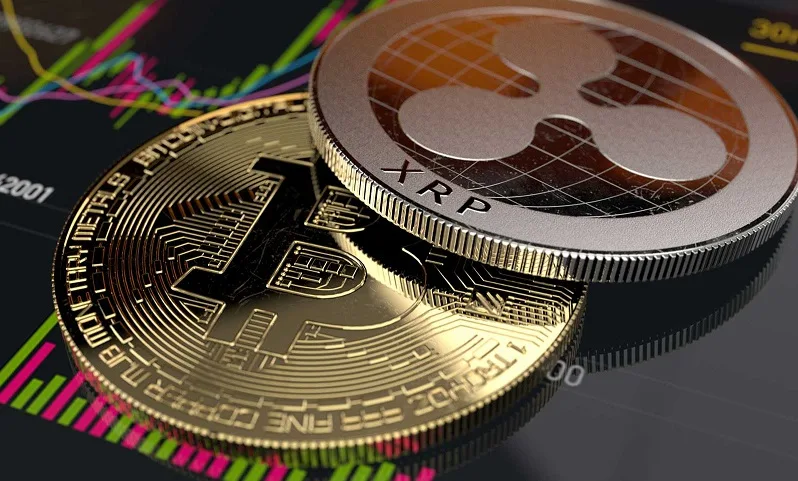
The world of cryptocurrency moves at breakneck speed, and Solana has emerged as one of the most talked-about players in recent years. Often labelled as a potential “Ethereum killer,” Solana’s rapid growth, ambitious technological approach, and developer-friendly features have placed it firmly in the spotlight. But is it truly capable of challenging Ethereum’s dominance — or is this just another trend in a crowded field of blockchain projects?
For UK investors and crypto-curious readers alike, this question holds serious weight. Ethereum has become a key pillar of the decentralised web, and any contender to that title deserves closer scrutiny — particularly in a market environment where technology and trust matter more than hype.
Solana vs. Ethereum: Not Just a Speed Battle
At first glance, Solana seems to offer an obvious advantage over Ethereum: speed. While Ethereum’s network has traditionally been hampered by congestion and high fees, Solana was built from the ground up to be fast, scalable, and inexpensive to use. Its unique consensus model, known as Proof of History combined with Proof of Stake, allows it to process thousands of transactions per second — a staggering difference compared to Ethereum’s base layer throughput.
But blockchain isn’t just about speed. Ethereum remains the dominant platform for decentralised applications (dApps), NFTs, and DeFi services. It has the largest developer community in the space, the most established ecosystem, and deep integration with financial institutions and enterprises globally.
Solana, meanwhile, is younger, faster, and arguably more agile. Its low transaction fees — often measured in fractions of a penny — make it ideal for use cases such as gaming, microtransactions, and real-time NFT minting. Ethereum, even after its shift to Ethereum 2.0 and Proof of Stake, continues to struggle with scalability and high gas costs unless users interact through Layer 2 solutions like Arbitrum or Optimism.
So the comparison is less about which is strictly better, and more about which is more fit for purpose in the years to come. Solana’s design aims to be the platform of choice for high-volume, low-cost applications, while Ethereum retains its position as the industry’s foundational layer.
Strengths That Position Solana as a Real Competitor
Although Ethereum’s first-mover advantage is significant, Solana brings a few strengths that continue to attract developers, venture capital, and institutional interest:
- Transaction speed and cost: Solana processes up to 65,000 transactions per second at incredibly low cost — making it a go-to solution for applications that require speed and scale.
- Growing ecosystem: From decentralised exchanges like Orca to NFT marketplaces such as Magic Eden, Solana’s ecosystem is expanding rapidly, supported by venture funding and active developer engagement.
In addition, Solana has gained credibility among major financial players and Web3 projects. The blockchain’s performance in terms of scalability has made it particularly appealing for real-time apps such as blockchain gaming, social media platforms, and decentralised data exchanges.
However, these advantages are not without drawbacks. Solana’s centralisation has been a point of concern. Unlike Ethereum, which boasts a wide and distributed network of nodes, Solana has faced criticism for being more concentrated in its validator set — and has even experienced network outages in the past due to these vulnerabilities.
Developer Activity and Community Support
An often-overlooked aspect of blockchain growth is developer adoption. Ethereum has enjoyed years of developer loyalty, deep community engagement, and a wide range of open-source tools. Solidity, Ethereum’s programming language, has become the gold standard for smart contract development.
Solana uses Rust and C — powerful but less accessible languages for those entering the blockchain space. Despite this, Solana’s developer community is growing, particularly among those building more performance-intensive applications.
The Solana Foundation has invested heavily in educational resources, hackathons, and ecosystem grants to encourage development. This grassroots support has led to a steady increase in total value locked (TVL) on the network, as well as a rise in unique users and daily active wallets.
It’s also worth noting that Solana is working on improving its reliability. Efforts to reduce downtime and strengthen network robustness are underway, and this could help remove one of the final barriers to wider institutional adoption.
A UK Investor’s Perspective: Is Solana Worth It?
From a UK investor’s standpoint, Solana represents both an opportunity and a risk. On one hand, its technology is undeniably impressive and its price point (compared to Ethereum) may appear attractive to retail investors seeking growth. On the other, Solana remains a relatively new platform facing questions around decentralisation, network reliability, and long-term viability.
While Ethereum has proven its staying power over time, Solana still needs to prove it can handle long-term demand without sacrificing the ideals of blockchain — namely security, decentralisation, and openness.
This doesn’t mean Solana is a poor choice. In fact, many analysts believe Solana may complement, rather than replace, Ethereum in the years ahead. Each blockchain may serve different use cases within the broader Web3 world. Ethereum could remain the home for large-scale finance and enterprise-grade applications, while Solana might dominate the real-time, user-driven economy through mobile-first apps and digital experiences.
A Real Rival, Not a Replacement
Rather than positioning Solana as the next Ethereum, it’s more accurate to say that it’s a rising counterpart. The cryptocurrency space is not a zero-sum game. As the ecosystem matures, there is likely to be room for multiple chains — each serving different functions, industries, and levels of users.
Solana’s ability to evolve will depend on how it handles key challenges: decentralisation, network stability, and competition from other high-speed blockchains. For now, it remains one of the most exciting technologies in the space — and certainly one to watch in 2025.
For investors and builders alike, it’s not about betting on a winner. It’s about understanding the strengths, weaknesses, and direction of each platform. Solana may not replace Ethereum, but it could very well define the next chapter of blockchain adoption.

 How to Avoid Credit Card Debt in the UK
How to Avoid Credit Card Debt in the UK  Inflation vs. Recession: Impact on Your Wallet Revealed
Inflation vs. Recession: Impact on Your Wallet Revealed  The BRICS Currency: Could It Challenge the U.S. Dollar’s Dominance?
The BRICS Currency: Could It Challenge the U.S. Dollar’s Dominance?